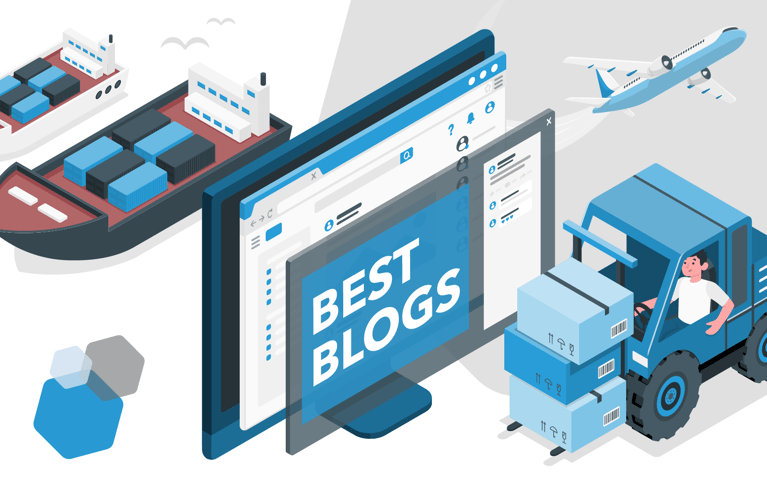Security plays a central role in fulfillment and logistics. Brands rely on both physical security and cybersecurity to protect assets and maintain business continuity. After a series of supply-chain cyberattacks affected thousands of businesses and breached data on millions of customers, companies have begun to ramp up supplier oversight.
Because supply chains are often composed of several components and brands work with various vendors for fulfillment and logistics, it’s critical to make sure sensitive information and products are protected. This ensures compliance, prevents financial loss, safeguards customer trust and increases operational efficiency. When businesses implement a comprehensive security strategy for their supply chain, it enables them to operate smoothly and securely in an increasingly complex and interconnected world.
The importance of security in logistics, fulfillment and the supply chain
In 2023, 2,769 entities in the United States were impacted by supply chain cyber-attacks. In addition, thieves stole over $44 million in goods from trucks and warehouses in the second quarter of 2023. While alarming, these incidents can be avoided by implementing strong strategies for secure logistics, fulfillment and supply chain. A comprehensive approach helps with:
Protection of assets
Physical security
- Theft prevention: Warehouses and fulfillment centers often store high-value items. Physical security measures, such as surveillance cameras, security personnel and access control systems, prevent theft and unauthorized access.
- Damage prevention: Secure facilities reduce the risk of damage from unauthorized access or sabotage, ensuring goods remain intact and in good condition.
Cybersecurity
- Data protection: Logistics companies handle sensitive customer data, including personal and financial information. Cybersecurity measures protect this data from breaches, ensuring customer privacy and preventing identity theft.
- Operational integrity: Cybersecurity ensures the integrity of digital systems that manage inventory, orders and shipments, preventing disruptions caused by cyberattacks.
Compliance with regulations
Physical security
- Regulatory adherence: Many industries have specific regulations regarding the storage and handling of goods (e.g., pharmaceuticals, hazardous materials). Secure facilities help companies comply with these regulations, avoiding fines and legal issues.
Cybersecurity
- Data protection laws: Compliance with data protection laws, such as GDPR or CCPA, requires robust cybersecurity measures to safeguard personal data and avoid hefty penalties.
Maintaining business continuity and enhancing operational efficiency
Physical security
- Disaster preparedness: Secure physical infrastructure, including fire suppression systems and emergency protocols, ensures that operations can continue or quickly resume after natural disasters or other emergencies.
- Streamlined processes: Secure and well-managed physical environments improve operational efficiency, reducing losses and ensuring smooth workflows.
- Integration of technology: Modern physical security systems often integrate with other technologies, such as automated warehousing solutions, to enhance security and operational efficiency.
Cybersecurity
- Resilience against attacks: Robust cybersecurity practices protect against ransomware and other cyberattacks that can halt operations. Regular backups and recovery plans ensure business continuity.
- System reliability: Secure IT systems reduce downtime and ensure that logistics and fulfillment processes run efficiently, enhancing overall productivity.
- Protection of IoT devices: As logistics and fulfillment centers adopt more IoT devices, cybersecurity becomes essential to protect these devices from being compromised, ensuring the security of the entire system.
Consumer trust and financial protection
Secure fulfillment and logistics are pivotal to building consumer trust and ensuring financial protection for businesses. Effective physical security measures, such as surveillance cameras, security personnel and access control systems, are essential in preventing inventory loss through theft or damage, directly safeguarding the company’s bottom line. By ensuring that goods remain intact and undamaged, businesses can deliver products reliably, which is crucial for maintaining customer trust and loyalty. When customers receive their orders on time and in perfect condition, their confidence in the brand grows, leading to repeat business and positive word-of-mouth.
Robust cybersecurity measures are crucial for preventing fraud and protecting sensitive data. Cybersecurity protocols safeguard against fraudulent activities, such as unauthorized transactions and cyber fraud, significantly reducing financial losses for the company. In addition, by preventing data breaches, businesses can protect customer information from being compromised. Data breaches can severely damage a company’s reputation, leading to a loss of customer confidence and potential legal repercussions. Maintaining strong cybersecurity practices ensures that customer data remains secure, which helps preserve the company’s reputation and fosters long-term trust with consumers.
Physical security in logistics and fulfillment
Implementing physical security in fulfillment and logistics operations is critical for safeguarding inventory, ensuring reliable delivery and maintaining consumer trust. Effective physical security measures protect against theft, damage and unauthorized access both within facilities and during transit. Businesses can enhance physical security implementing the following elements:
Facility security
Access Control:
- Implement badge systems, biometric scanners or keypads to control entry to warehouses and storage areas.
- Regularly update access permissions and conduct audits to ensure only authorized personnel have access.
- Use visitor management systems to track and monitor all non-employee entries and exits.
- Having security guards stationed at the warehouse ensures continuous on-site protection, deterring potential intruders and promptly addressing any security incidents. It’s also a way to control access into and out of the building.
Surveillance systems:
- Install CCTV cameras strategically throughout the facility to monitor critical areas and deter unauthorized activities.
- Integrate surveillance systems with motion sensors and alarms for real-time alerts of suspicious activities.
- Ensure surveillance footage is stored securely and reviewed regularly for any signs of breaches or irregularities.
Intrusion detection:
- Utilize advanced alarm systems that detect unauthorized entry or movement within restricted areas.
- Employ technologies such as infrared sensors, motion detectors, and window/door contacts to secure the facility perimeter.
- Conduct regular security drills and system tests to ensure the effectiveness of intrusion detection measures.
In-transit security
Vehicle tracking:
- Equip transportation vehicles with GPS and telematics systems for real-time location tracking and route monitoring.
- Use geofencing to create virtual boundaries and receive alerts if a vehicle deviates from its designated route.
- Analyze tracking data to optimize delivery routes and improve overall logistics efficiency.
Secure packaging:
- Use tamper-evident seals, RFID tags and robust packaging materials to protect goods during transit.
- Implement procedures for documenting and inspecting packages at each stage of the shipping process.
- Train staff on proper packaging techniques to minimize the risk of damage and ensure package integrity.
Driver safety:
- Develop and enforce protocols for driver safety, including regular training on security awareness and emergency response.
- Equip drivers with communication devices and panic buttons for immediate assistance in case of threats.
- Conduct background checks on drivers and monitor their adherence to security protocols to ensure a trustworthy workforce.
Cybersecurity in logistics and fulfillment
Cybersecurity is paramount for protecting sensitive data, ensuring robust system security and effectively responding to incidents in fulfillment and logistics. The protection of customer information and shipment details is crucial, necessitating robust encryption methods. Maintaining secure systems and being prepared for potential breaches through regular audits and incident response plans are also essential for operational integrity and customer trust. A comprehensive cybersecurity strategy includes:
Data protection:
- Types of data that need protection include customer information and shipment details, which are vital for privacy and trust.
- Employing encryption techniques is essential for protecting data both in transit and at rest, safeguarding sensitive information from unauthorized access.
System security:
- Basic cybersecurity measures, such as firewalls and antivirus software, are fundamental for defending against common threats.
- Implementing a secure network architecture along with regular vulnerability assessments helps in identifying and addressing potential security gaps.
- Regularly updating software and systems is crucial for protecting against emerging vulnerabilities and ensuring overall system integrity.
Incident response:
- Developing and implementing a detailed incident response plan enables swift and effective action in the event of a security breach.
- Conducting regular security audits is essential for identifying potential weaknesses and ensuring that security measures remain effective and up to date.
Integrating physical and cybersecurity measures
Integrating physical and cybersecurity measures is essential for creating a robust and comprehensive security framework. A holistic approach is ideal and involves developing a unified security strategy that seamlessly combines physical and digital defenses, enhancing overall protection. Cross-training staff to understand both physical and cybersecurity protocols ensures that they can effectively respond to a wide range of threats, further strengthening security. Technology integration plays a crucial role in this approach, with IoT devices being used to monitor physical security and link it with cybersecurity measures, providing a cohesive defense mechanism. In addition, automated systems for real-time threat detection and response allow for immediate action against potential breaches, significantly reducing the risk of security incidents. This integrated strategy not only fortifies the security infrastructure but also streamlines operations, creating a resilient and adaptive security posture.
What products or industries need more supply chain security?
Some industries and products need heightened security because of their nature. This makes it essential to implement security measures that ensure valuable, sensitive and regulated items are protected from theft, damage and unauthorized access while also maintaining the integrity of the supply chain, warehousing and fulfillment processes. For example:
High-value goods
Higher-value goods, such as electronics (smartphones, laptops, TVs), luxury watches and jewelry, require stringent security measures to protect them in warehouse and fulfillment environments. Enhanced access control systems are essential to regulate and monitor entry, ensuring only authorized personnel can access sensitive areas. Advanced surveillance, including CCTV and motion detectors, provides constant monitoring and quick detection of suspicious activities. Secure, lockable storage units or cages within the warehouse offer an additional layer of physical security, preventing unauthorized access to these valuable items. Alarm systems and on-site security personnel are also crucial in responding promptly to potential security breaches.
Pharmaceuticals and medical supplies
Pharmaceuticals and medical supplies, including prescription medications, vaccines and medical devices, necessitate rigorous security measures to ensure their safety and integrity. Strict inventory management and tracking systems are essential to maintain accurate records and prevent unauthorized access or diversion. Temperature-controlled environments with continuous monitoring are crucial for preserving the efficacy of sensitive products. Compliance with regulatory standards, such as those set by the FDA and DEA, ensures that handling, storage and distribution processes meet legal and safety requirements. Secure packaging and tamper-evident seals further protect these critical items from contamination, tampering, and theft, ensuring they reach the end-users safely and intact.
Perishable goods
Perishable goods, such as food items, beverages and flowers, require stringent security measures to maintain quality and prevent spoilage. Refrigerated or climate-controlled storage is essential to keep these items at the proper temperature, ensuring they remain fresh and safe for consumption. Real-time temperature and humidity monitoring systems provide continuous oversight, alerting staff to any fluctuations that could compromise the integrity of the goods. Strict inventory rotation practices are necessary to ensure that older stock is used first, preventing wastage and maintaining freshness. Moreover, secure loading and unloading areas are crucial to prevent contamination and ensure that perishable items are handled in sanitary conditions throughout the supply chain.
Luxury apparel and accessories
Luxury apparel and accessories, including designer clothing, handbags and footwear, demand high levels of security to protect against theft and damage. Secure storage areas with controlled access ensure that only authorized personnel can handle these valuable items. Anti-theft devices and tagging systems add an extra layer of protection, making it difficult for unauthorized removal of merchandise. Surveillance cameras and security personnel provide constant monitoring, deterring potential theft and ensuring quick response to any security breaches. Effective inventory management systems track and monitor stock, providing real-time data on the location and quantity of luxury items, reducing the risk of loss and ensuring efficient operations.
High-tech equipment
High-tech equipment, such as servers, networking devices and advanced machinery, requires comprehensive security measures to safeguard against theft, damage and environmental hazards. Secure, lockable storage units or cages provide robust physical protection, ensuring only authorized personnel can access these valuable assets. Environmental controls, including temperature and humidity regulation, are critical to protect sensitive electronics from damage due to environmental factors. Access control systems and surveillance cameras enhance security by monitoring entry points and activities within storage areas. Insurance coverage for high-value assets also offers financial protection against potential losses, ensuring that businesses can recover quickly in the event of theft or damage.
Government: The public sector
Secure fulfillment in the public sector is critical to maintaining national security, public trust and the effective functioning of government services. Implementing robust security measures ensures the protection of sensitive information, compliance with regulations and the safeguarding of public health, safety and heritage. Government fulfillment requires:
- Protection of sensitive information: The government handles vast amounts of sensitive information, including personal data, classified documents and financial records. If compromised, this information could lead to identity theft, financial loss and breaches of national security. To protect this data, secure storage facilities with restricted access, advanced encryption and cybersecurity protocols, and regular audits in compliance with data protection laws are essential.
- National security: Ensuring the security of military and defense-related items, such as military equipment, intelligence reports and emergency response plans, is crucial to national security. Any breach in these areas could compromise operations and safety. Security measures include secure warehousing with restricted access and surveillance, rigorous background checks for personnel and secure transportation and handling protocols.
- Compliance with regulatory requirements: Government agencies must comply with various regulatory requirements for the safe handling, storage and distribution of controlled and hazardous materials like controlled substances, hazardous materials and medical supplies. Compliance with OSHA, FDA, EPA and other regulatory standards is mandatory. Secure storage areas specifically designed for these substances and comprehensive tracking and inventory systems are critical for maintaining safety and compliance.
- Continuity of public services: To ensure the continuous availability of essential public services and emergency response capabilities, the government must securely store and rapidly deploy infrastructure components, emergency supplies and public health equipment. Robust supply chain management is necessary to prevent disruptions. Contingency planning and risk management strategies are also essential for maintaining public service continuity.
- Prevention of fraud and misuse: Preventing fraud and misuse of public funds and resources, such as financial disbursements, social services benefits and procurement contracts, is vital to maintaining public trust and efficient government operations. Secure systems for financial transactions and record-keeping, transparent and accountable procurement processes, and regular audits and oversight are crucial security measures to achieve this.
Best practices for secure fulfillment
Implementing best practices for secure fulfillment helps protect both physical and digital assets. Regular training is crucial; staff should be continually educated on security protocols to stay updated on the latest threats and prevention techniques. Incorporate multiple levels of protection, such as access controls, surveillance systems and cybersecurity measures, to create a robust defense against breaches. Collaboration between physical security and IT departments enhances overall security by integrating physical and cyber defense strategies, ensuring comprehensive protection
Continuous improvement is vital to your security operations. Security measures should be regularly reviewed and updated to address emerging threats and vulnerabilities. This proactive stance ensures that the fulfillment center remains resilient against evolving risks. Engage in regular audits and assessments to help identify potential weaknesses in security protocols. Encouraging employee vigilance and creating a culture of security awareness can lead to early detection of suspicious activities and prevent incidents before they escalate. Lastly, leverage technology, such as advanced surveillance, intrusion detection systems and real-time monitoring tools to significantly bolster security measures, providing a dynamic and responsive defense against potential threats.
Invest in a secure 3PL
Your fulfillment and supply chain security depends greatly on your services. Cart.com uses the most current practices and advanced technology to ensure secure warehousing and omnichannel fulfillment operations. Contact our team today to learn more.
Subscribe to our emails for the latest industry insights!
By entering your email, you agree to receive marketing emails from Cart.com








